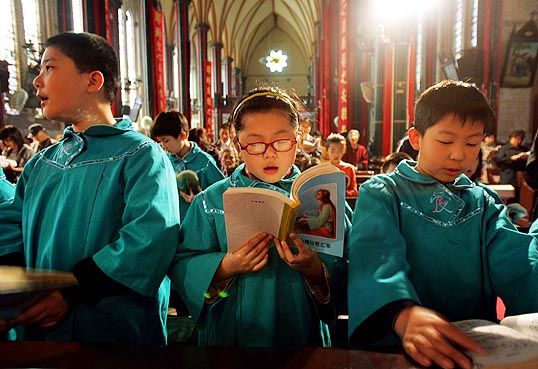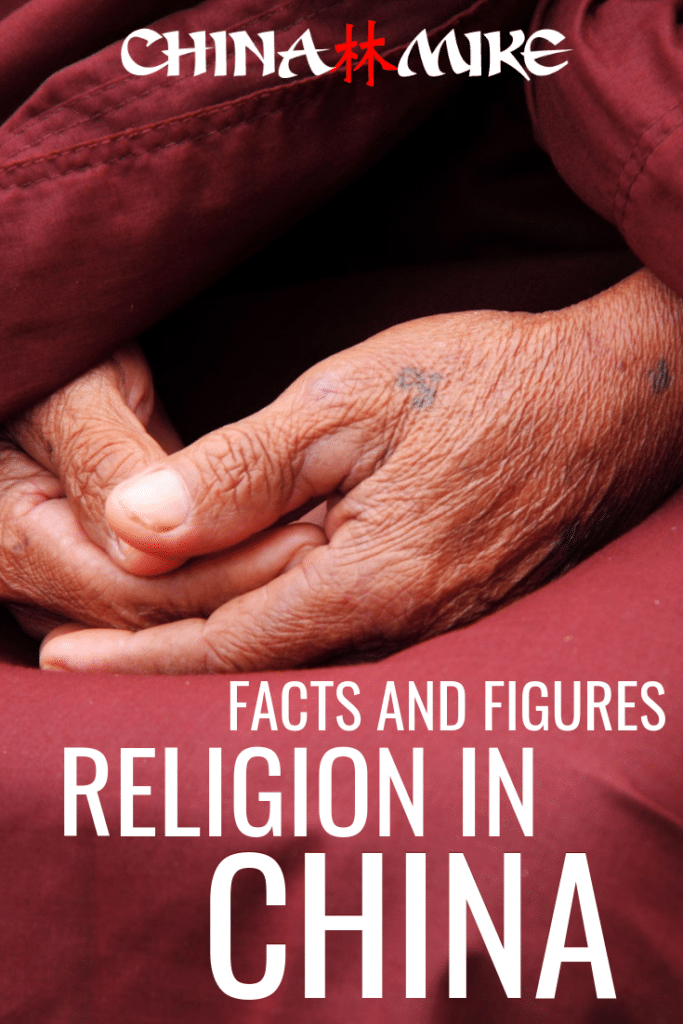Religion in China exists but is by no means popular. China is officially an atheist state with one of the lowest percentages in the world of people who consider themselves religious.
When it comes to religion in China, it is multifaceted. Taoism, Buddhism, Islam, Protestantism, and Catholicism have all developed into culture-shaping communities throughout Chinese history. Freedom of belief is a government policy, and normal religious activities are protected by the constitution. For many of China’s citizens, their religion is a defining feature alongside their national pride.
The Four Chinese Religions
Religion in China today is growing in diversity and openness to the worldwide context. No religion has ever assumed a dominant position in China. Foreign religions, influenced by time-honored Chinese Culture and tradition, have gradually become fixtures with distinctive Chinese characteristics.
The four major religions in China (Buddhism, Taoism, Islam, and Christianity) each have a long history of influence. We will discuss each of the following in more detail below.
Buddhism
Buddhism spread from India to China some 2,000 years ago. The majority of Buddhist believers are Han Chinese while Buddhist believers in Tibet also make up a sizable portion. They are typically from the Tibetan, Mongolian, Lhoba, Moinba and Tujia nationalities.
Buddhists make up the largest religious communities in China. However, since many Han practice a historical/cultural Buddhism rather than a daily practice, it can be difficult to count their exact numbers.
Taoism
Taoism is native to China and has a history of more than 1,700 years. Its founder was Lao Tzu and its doctrines are based on his writings about the Tao or the Way. Taoism is centered on the “three treasures” which are: Humility, Compassion, and Frugality.
You are probably already familiar with some of the symbolism of Taoism without even realizing it. The famous Yin and Yang symbol is a foundational illustration os Taoist beliefs. In it, we can see the importance of harmony in the Taoist tradition.
It is considered a polytheistic religion and is still quite influential in rural areas inhabited by the Han Chinese and several minority groups, such as the Yao. Taoism also has a strong presence in Hong Kong, Macau, and Southeast Asia.
Islam
Islam spread from the Arab Countries to China more than 1,300 years ago. It now has more than 14 million believers among the Hui, Uyghur, Kazak, Ozbek, Tajik, Tatar, Kirgiz, Dongxiang Sala and Banan ethnic groups.
The Islamic followers mainly live in Provinces of Xinjiang, Ningxia, Ganxu and Qinghai in northwest China. There are also Islamic communities scattered in almost every city.
Chinese Muslims do not eat pork, dogs, horses, donkeys or mules. There are many famous mosques in China that make excellent stops on a religious tour of China’s culture.
Christianity
Catholicism and other forms of Christianity began to make their way into China very early. In 635, a missionary of the Nestorian sect came to China from Persia. The religion was slow in gaining a strong foothold in China but is now well established.
Today, there are many famous churches that make for interesting religious visits. Now there are more than 3.3 million Catholics and nearly 5 million Protestants in the country.
The study disputed the long-standing official estimate of 100 million, a figure that has stood since the 1960s. Buddhism, Taoism, and Islam accounted for 67% of believers. [ The Washington Post ]
China Facts: Christianity in China
China will soon have the largest Christian population in the world, according to a government-sponsored survey. David Aikman (author of Jesus in Beijing: How Christianity is Transforming China and Changing the Global Balance of Power, 2003) predicted that over the next three decades, China’s Christian population will grow to about 400 million, or one-third of China’s population.
There are more Christians in China than the entire population of Italy or the U.K. In an article published in the Great Britain-China Centre, Archbishop of Canterbury, Rowan Williams, estimated the number of Protestants in China to be between 50-80 million.
[Great Britain-China Centre; The Buddhist Times “China will soon have World’s Largest Christian Population” April 1, 2009 ]
The world’s largest Bible producer is Chinese. In 2007, China’s only authorized Christian publisher celebrating a milestone as the 50 millionth Bible rolled off their presses. The publisher opened a new factory in 2008 with the capacity to print one million Bibles a month.
[ The Times UK “The book they used to burn now fires new revolution of faith in China” Dec. 8, 2007; Fox News “Chinese Factory Set to Become World’s Largest Bible Producer” Dec. 7, 2007 ]
China Facts: Catholicism in China
In 2010, China’s state-backed Catholic church ordained a bishop without papal approval from the Vatican. China and the Vatican have not had official diplomatic ties since the 1950s when Beijing expelled foreign clergy.
China is home to an estimated 10 million Catholics, most of whom belong to the Patriotic Chinese Catholic Church. However, this doesn’t include several million more Catholics who belong to an underground Catholic Church, which accepts the sole authority of the Pope in Rome to appoint new bishops.
[ BBC News “China ordains bishop despite Vatican objection” Nov. 20, 2010 ]
Final Thoughts | Religion in China
While China is a majority atheist country, there are hundreds of millions of religious believers. From popular religions like Daoism and Buddhism to fast-growing Islam and Christianity, don’t be surprised if you meet many religious people on your trip to China.
When it comes to religion in China, this country will soon have the largest Christian population in the world, and already has more practicing believers than both the UK and Italy! While Christians may only make up a tiny percentage of the Chinese population, they are a massive force on a global scale.










